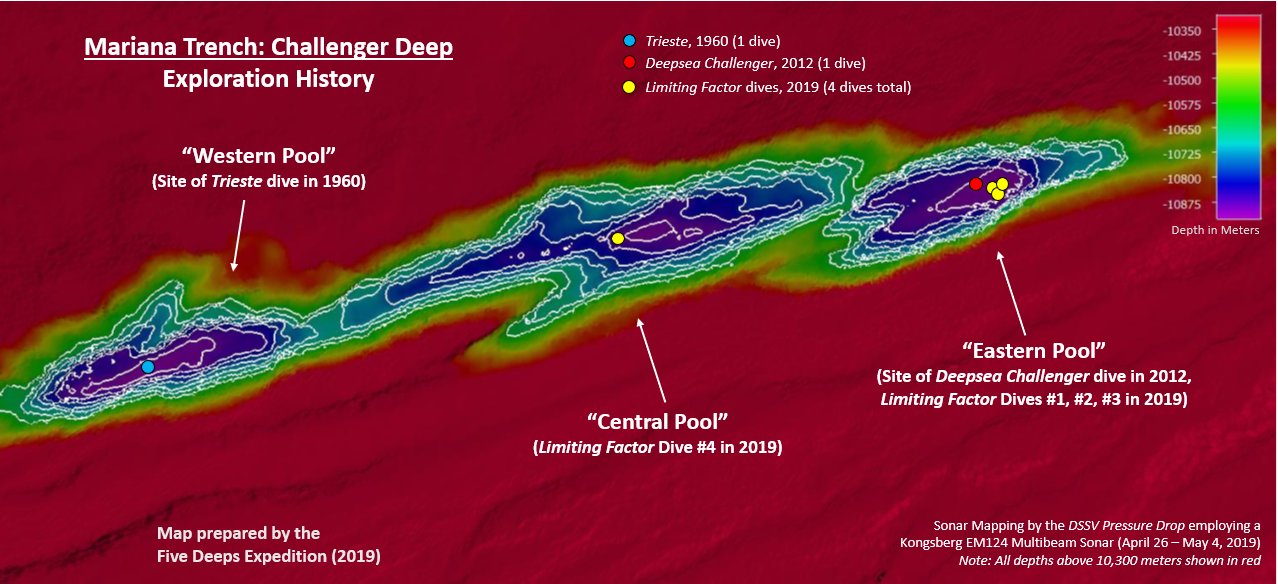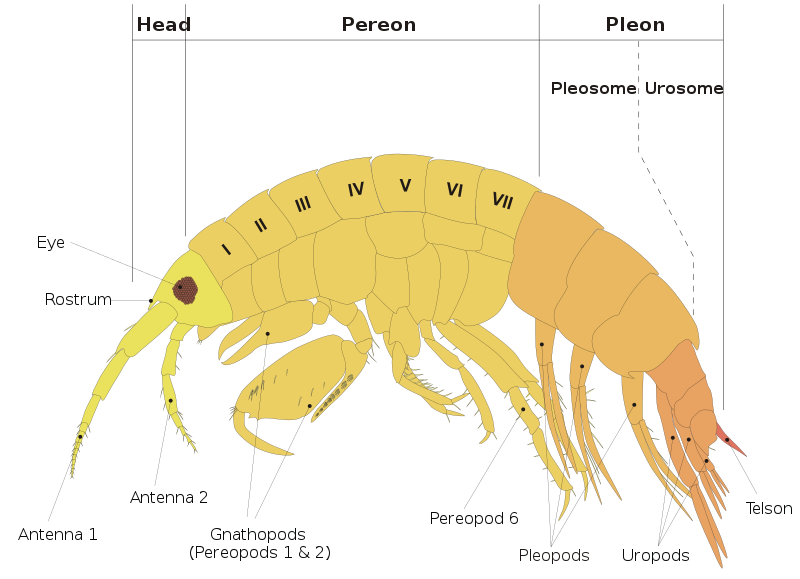https://en.wikipedia.org/wiki/Amphipoda wrote:
<<Amphipoda is an order of malacostracan crustaceans with no carapace and generally with laterally compressed bodies. Amphipods are mostly detritivores or scavengers. There are more than 9,900 amphipod species so far described. They are mostly marine animals, but are found in almost all aquatic environments. The name Amphipoda comes, via the New Latin amphipoda, from the Greek roots ἀμφί ("different") and πούς ("foot"), in reference to two kinds of legs that amphipods possess. This contrasts with the related Isopoda, which have a single kind of thoracic leg. Particularly among anglers, amphipods are known as freshwater shrimp, scuds or sideswimmers.
Amphipods are typically less than 10 millimetres (0.4 in) long, but the largest recorded living amphipods were 28 centimetres (11 in) long, and were photographed at a depth of 5,300 metres in the Pacific Ocean. Samples from the Atlantic Ocean with a reconstructed length of 34 centimetres (13 in) have been assigned to the same species, Alicella gigantea. The smallest known amphipods are less than 1 millimetre (0.04 in) long. The size of amphipods is limited by the availability of dissolved oxygen, such that the amphipods in Lake Titicaca at an altitude of 3,800 metres can only grow up to 22 millimetres (0.87 in), compared to lengths of 90 millimetres (3.5 in) in Lake Baikal at 455 metres (1,500 ft).
Amphipods are thought to have originated in the Lower Carboniferous. Despite the group's age, however, the fossil record of the order Amphipoda is meagre, comprising specimens of one species from the Lower Cretaceous (Hauterivian) Weald Clay (United Kingdom) and 12 species dating back only as far as the Upper Eocene, where they have been found in Baltic amber.
Amphipods are found in almost all aquatic environments, from fresh water to water with twice the salinity of sea water and even in the Challenger Deep, the deepest known point in the ocean. They are almost always an important component of aquatic ecosystems, often acting as mesograzers. In populations found in Benthic ecosystems, amphipods play an essential role in controlling brown algae growth. The mesograzer behaviour of amphipods greatly contributes to the suppression of brown algal dominance in the absence of amphipod predators. Amphipods display a strong preference for brown algae in Benthic ecosystems, but due to removal of mesograzers by predators such as fish, brown algae is able to dominate these communities over green and red algae species.
The landhoppers of the family Talitridae (which also includes semi-terrestrial and marine animals) are terrestrial, living in damp environments such as leaf litter. Landhoppers have a wide distribution in areas that were formerly part of Gondwanaland, but have colonised parts of Europe and North America in recent times.>>



